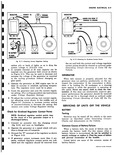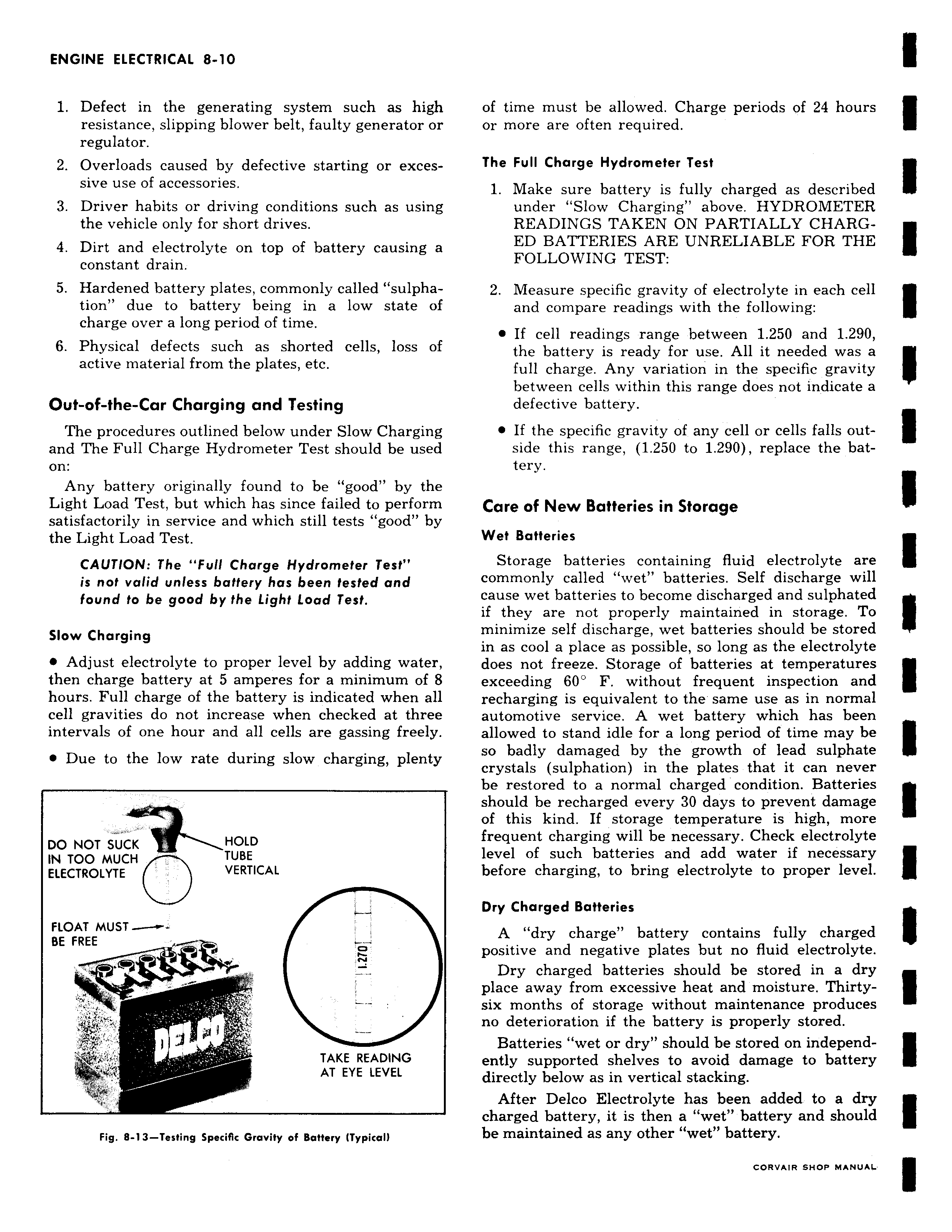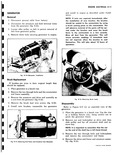Jeep Parts Wiki | Ford Parts Wiki
Home | Search | Browse
Prev

 Next
Next
1 Defect in the generating system such as high resistance slipping blower belt faulty generator or regulator 2 Overloads caused by defective starting or excessive use of accessories 3 Driver habits or driving conditions such as using the vehicle only for short drives 4 Dirt and electrolyte on top of battery causing a constant drain 5 Hardened battery plates commonly called sulphation due to battery being in a low state of charge over a long period of time 6 Physical defects such as shorted cells loss of active material from the plates etc Out of the Car Charging and Testing The procedures outlined below under Slow Charging and The Full Charge Hydrometer Test should be used on Any battery originally found to be good by the Light Load Test but which has since failed to perform satisfactorily in service and which still tests good by the Light Load Test CAUTION The Full Charge Hydrometer Test is not valid unless battery has been tested and found to 6e good by the Light Load Test Slow Charging 0 Adjust electrolyte to proper level by adding water then charge battery at 5 amperes for a minimum of 8 hours Full charge of the battery is indicated when all cell gravities do not increase when checked at three intervals of one hour and all cells are gassing freely 0 Due to the low rate during slow charging plenty DO NOT SUCK W HOLD IN TOO MUCH 0 TUBE ELECTROLYTE VERTICAL FLOAT MUST BE FREE o J I Y TAKE READING AT EYE LEVEL Fig B 13 Testing Specific Gravity of Battery Typical of time must be allowed Charge periods of 24 hours or more are often required The Full Charge Hydrometer Test 1 Make sure battery is fully charged as described under Slow Charging above HYDROMETER READINGS TAKEN ON PARTIALLY CHARGED BATTERIES ARE UNRELIABLE FOR THE FOLLOWING TEST 2 Measure specific gravity of electrolyte in each cell and compare readings with the following If cell readings range between 1 250 and 1 290 the battery is ready for use All it needed was a full charge Any variation in the specific gravity between cells within this range does not indicate a defective battery If the specific gravity of any cell or cells falls outside this range 1 250 to 1 290 replace the battery Care of New Batteries in Storage Wet Batteries Storage batteries containing fluid electrolyte are commonly called wet batteries Self discharge will cause wet batteries to become discharged and sulphated if they are not properly maintained in storage To minimize self discharge wet batteries should be stored in as cool a place as possible so long as the electrolyte does not freeze Storage of batteries at temperatures exceeding 60 F without frequent inspection and recharging is equivalent to the same use as in normal automotive service A wet battery which has been allowed to stand idle for a long period of time may be so badly damaged by the growth of lead sulphate crystals sulphation in the plates that it can never be restored to a normal charged condition Batteries should be recharged every 30 days to prevent damage of this kind If storage temperature is high more frequent charging will be necessary Check electrolyte level of such batteries and add water if necessary before charging to bring electrolyte to proper level Dry Charged Batteries A dry charge battery contains fully charged positive and negative plates but no fluid electrolyte Dry charged batteries should be stored in a dry place away from excessive heat and moisture Thirtysix months of storage without maintenance produces no deterioration if the battery is properly stored Batteries wet or dry should be stored on independently supported shelves to avoid damage to battery directly below as in vertical stacking After Delco Electrolyte has been added to a dry charged battery it is then a wet battery and should be maintained as any other wet battery

 Next
Next